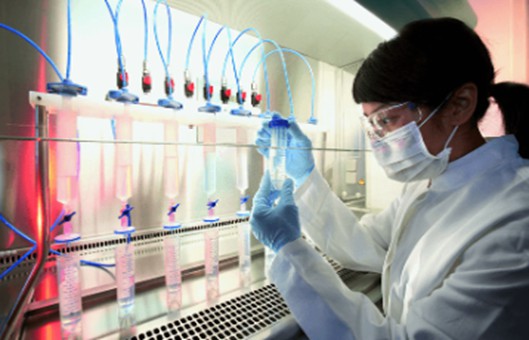Cell Quantification Protocol
GUIDELINE
Cell quantification refers to the process of determining the number or concentration of cells in a given sample. The protocol describes a method of cell quantification.
METHODS
- Bring adherent and semi-adherent cells into suspension using trypsin/EDTA and resuspended in a volume of fresh medium at least equivalent to the volume of trypsin. For cells that grow in clumps centrifuge and resuspend in a small volume and gently pipette to break up clumps.
- Before the cells settle, place a suitable volume of a cell suspension (20-200 μL) in a centrifuge tube. Add an equal volume of 0.4% Trypan Blue and gently mix. Incubate the mixture at room temperature (15-25°C) for 5 minutes.
- Prepare a hemocytometer by cleaning the chamber surface with 70% ethanol.
- Moisten the coverslip with water or exhaled breath. Fill both sides of the chamber with cell suspension (approximately 5-10 μL) and view under an inverted phase contrast microscope using x20 magnification.
- Count the number of viable (seen as bright cells) and non-viable cells (stained blue). Ideally >100 cells should be counted in order to increase the accuracy of the cell count. Note the number of squares counted to obtain your count of >100.
- Calculate the concentration of viable and non-viable cells and the percentage of viable cells.
Creative Bioarray Relevant Recommendations
- Creative Bioarray provides Trypan blue staining, commonly used for the determination of cell viability. And we provide many fluorescent dyes that are highly specific to a variety of organelles and can be used to monitor cell health and cell death. Our cell counting kit also performs well in practice. We are always committed to providing customers with high-quality products and services.
NOTES
- Trypan Blue is toxic and is a potential carcinogen. Protective clothing, gloves, and face/eye protection should be worn. Do not breathe the vapor.
- The central area of the counting chamber is 1 mm2. This area is subdivided into 25 smaller squares (1/25 mm2). Each of these is surrounded by triple lines and is then further divided into 16 (1/400 mm2). The depth of the chamber is 0.1 mm.
- Be careful not to move the coverslip. Allow capillary action to draw the sample in.


